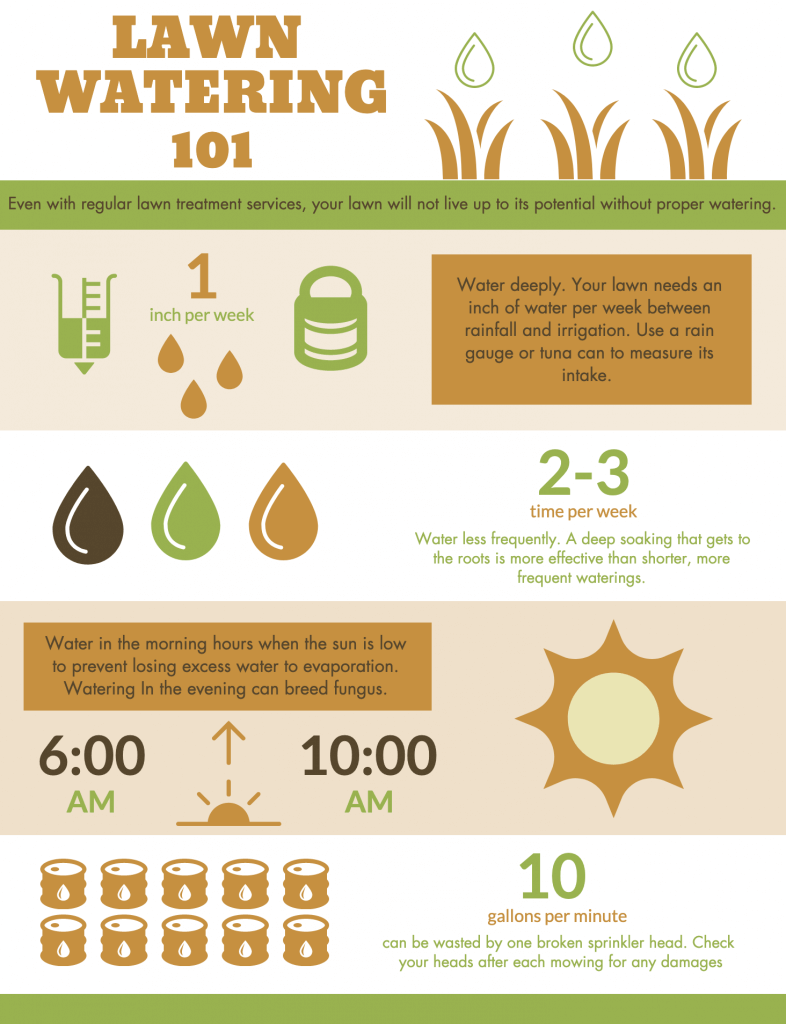Don’t Overwater Your Lawn
June 1, 2020
While water is critical to the health of your lawn, too much water can have devastating effects on your turf, leaving it susceptible to pests and diseases.
Here are a few signs that will let you know you’re overwatering your lawn:
- Increased weeds, like crabgrass or yellow nutsedge.
- Spongy turf that remains squishy hours after watering.
- Water runoff as you water your lawn.
- Patches of dying grass.
- Mushrooms or other fungus growing.
Once you identify overwatering as the issue, there are some simple steps you can take to get your lawn back on track.
Steps for watering properly:
- Give your lawn an inch of water per week (a little more in drought conditions) between rainfall and irrigation. Check that your sprinklers are watering evenly.
- Irrigate based on soil moisture not on a rigid schedule.
- Water deeply and infrequently. Your lawn should usually be a bit thirsty to promote deeper roots, so don’t water every day, instead water 2-3 times a week giving it a good deep soaking.
- Water in the morning hours before 10 am.
- Don’t water immediately before or after a rainstorm.
A measured approach to watering, combined with our treatment programs, will have your lawn well on its way to looking its very best.





